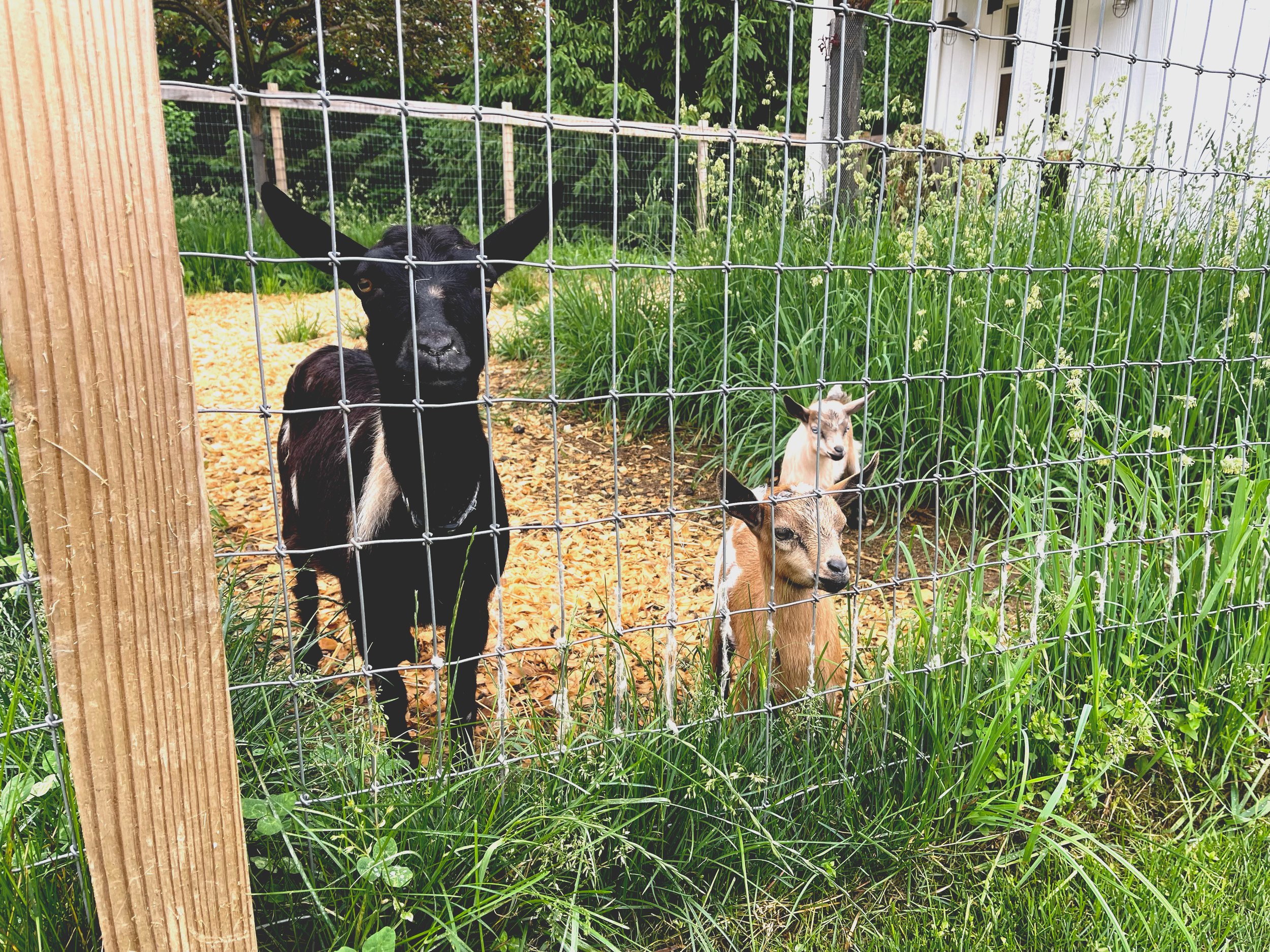Wood chips are great for areas of high moisture as it helps absorb excess water while also regulating temperature, suppressing weeds, and feeding the soil - just like other mulch options. These goats love their area of wood chips!
Flower bed with black-dyed mulch applied for a more aesthetically pleasing look. Not only is it visually appealing, it also protects the soil from erosion, regulates temperature, retains moisture, and much more!
Mulching is the practice of coating the soil around trees and plants within a landscape with mulch or compost. Mulch is tree and vegetation debris that is ground into a pulp. Mulch comes in a variety of shapes, sizes, colors, and textures. Compost is vegetation or kitchen scraps that have been left to decompose into one cohesive medium. Traditional compost is great for mixing into the soil, but leaf compost (also referred to as leaf mulch) is a great alternative to traditional mulch. So bottom line, you’ve got options.
Mulching has a slew of benefits for both you and the plants. In my opinion, mulching completes the garden. It’s the icing on the cake. Adding the extra layer will suppress weed growth and create a clean, cohesive look to the garden. It also acts as a visible marker of garden beds to help limit damage to the vegetation by landscaping equipment. As far as the plants are concerned, mulch helps to retain moisture and insulate the soil from temperature extremes. The main benefit of mulching is the nutrients and soil quality. We need to keep up with mulching because it decomposes into the soil, improving the overall quality and adding nutrients and beneficial organisms. Even in the off-season, mulch helps to prevent soil erosion from heavy rain and harsh winters.
Mulching is very straightforward. You need to add the mulching medium on top of the soil in the desired beds. Whether the perimeter of the bed is feathered out or kept within an edge, you want to make sure the coverage is consistent. We don’t want a mulch volcano. There shouldn’t be more than a 2” layer of mulch, and it shouldn’t peak at the center, for instance, around a tree trunk. Other than that, there aren’t many rules.
Mulch comes in all different shapes and sizes for each person’s different needs. If you’re taking the organic approach, leaf mulch, triple-ground root mulch, and pine bark nuggets are great options. Triple-ground root mulch is exactly what it sounds like, it’s simply roots with bits of soil and lumber that get grounded three times. Pine Bark mulch is nugget-shaped pieces of pine bark, available in regular or mini sizes. Pine bark nuggets have a wonderful aroma and beautiful appearance. If you’re going for a specific aesthetic, then black, brown, or red-dyed mulch could be the right fit. A lot of businesses will use colored mulch for their beds since their main focus is on aesthetics. For those worrying, there is no evidence that the dyes used in colored mulches are toxic to the plants. Some bagged mulches tend to be visibly dyed more than those at local mulch retailers. Although it isn’t super popular, wood chips are also an option. If you’re getting a tree chipped, hold on to the chips and use them to mulch, otherwise, there are local mulch retailers that offer it. Facebook Marketplace is always a good last resort for wood-related inquiries.
Flower bed with pine bark mulch being enjoyed by two adventurous cats. Pine bark does not matt down as easily as other bark options and it is very rich in nutrients so your plants will thrive!
Like anything else, it’s good to be cautious of what you’re getting. It’s important to know what’s in your mulch or compost. While a lot of people are quick to buy bagged mulch from their local Home Depot or Lowes, I think it’s important to stay small and local. A lot of these small businesses are multigenerational companies that know their stuff and care about the product they provide. Bagged mulch, as appealing as it is, is sometimes made with construction debris, plastics, and whatever filler materials may be available. Since the mulch is so heavily dyed, the unwanted particles blend in seamlessly. The human eye may not notice, but the plants sure do. At Cultural Landscapes, we purchase mulch from our local mulch supplier. The mulch is consistent and fresh and we can see how they process it. Cut lumber and vegetation straight to the chipper, with no plastic or any other unwanted particles making their way in.
With compost, it can be pretty easy to know if you’re using your own compost. They do sell leaf mulch in bags at certain retailers, but they aren’t cheap. Typically local townships have public leaf clean-ups, where they collect leaves in piles along the curb, then grind the leaves up. Usually, you can inquire with the township and purchase the leaf mulch. This is great and convenient, but more often than not, trash will end up in these piles and make its way into the compost/mulch. I try to keep the garden as organic as possible, but not everything’s a perfect guarantee, so just keep an eye out for the occasional piece of plastic.
All and all, mulch has its place at the gardening table. It’s an essential part of spring clean-ups, preparing your garden for the seasons to follow and ensuring success. There are several ways to go about mulching your property, and with all of the options out there, there’s surely a type of mulch that’ll work perfectly with your garden.



